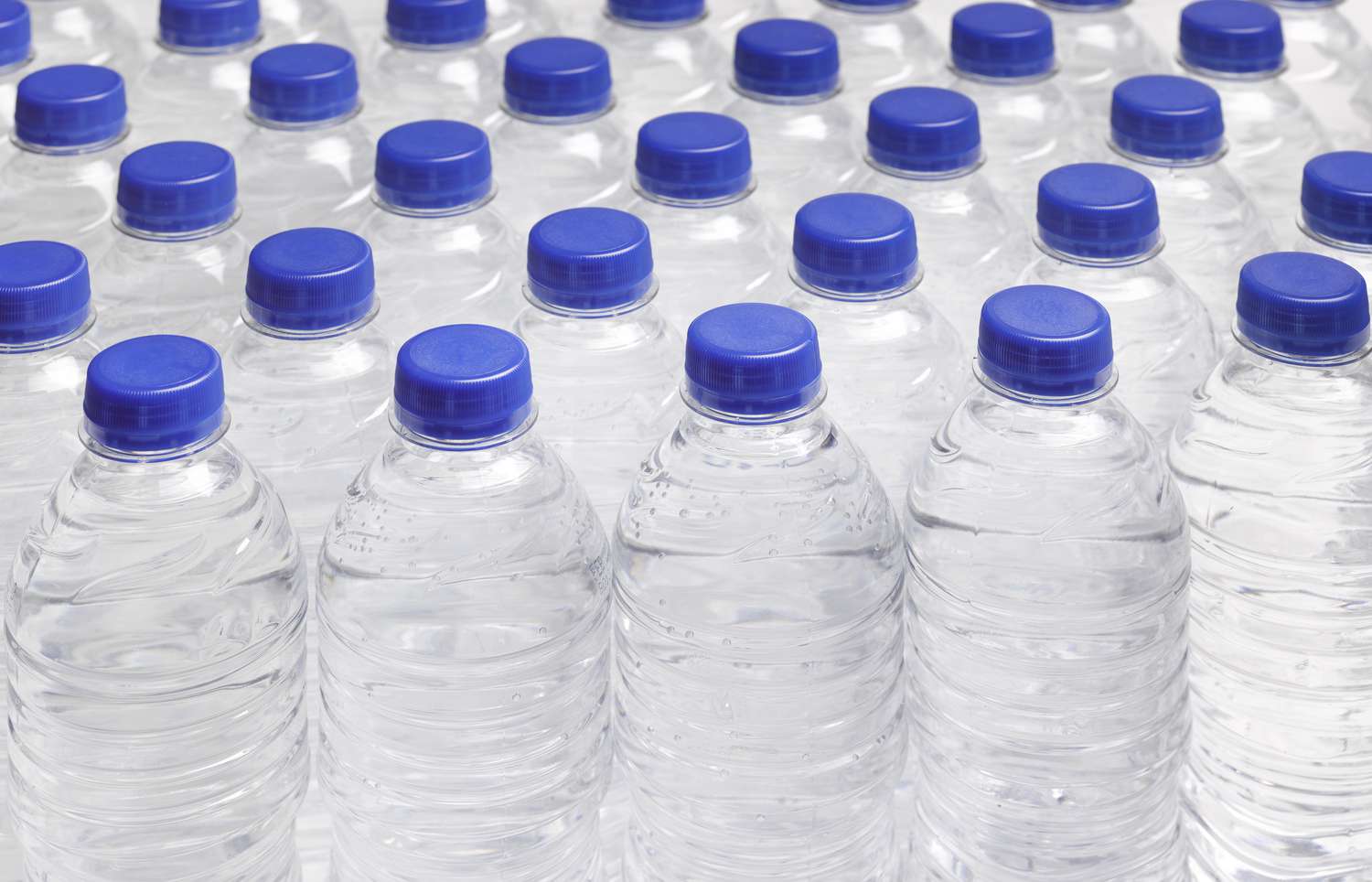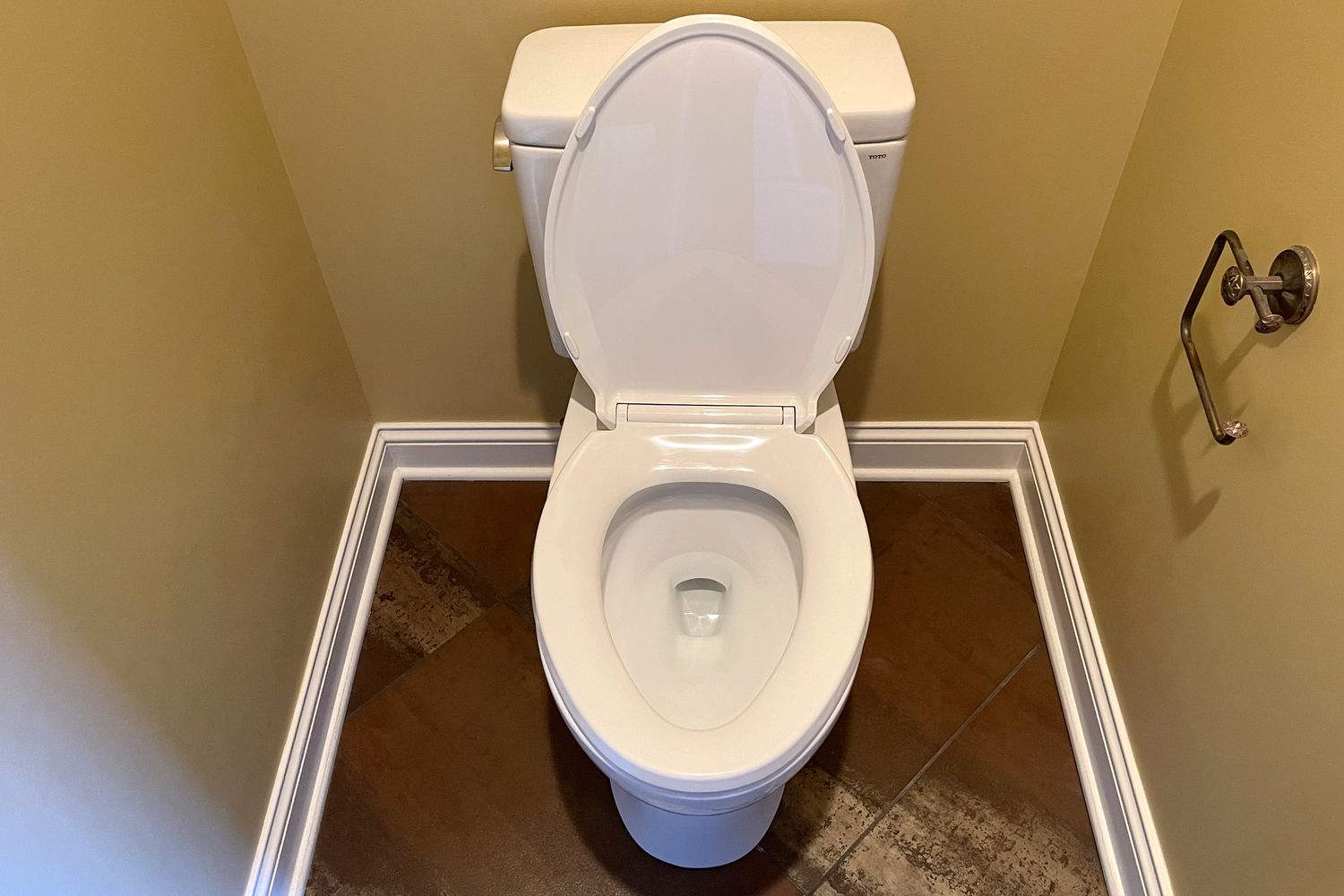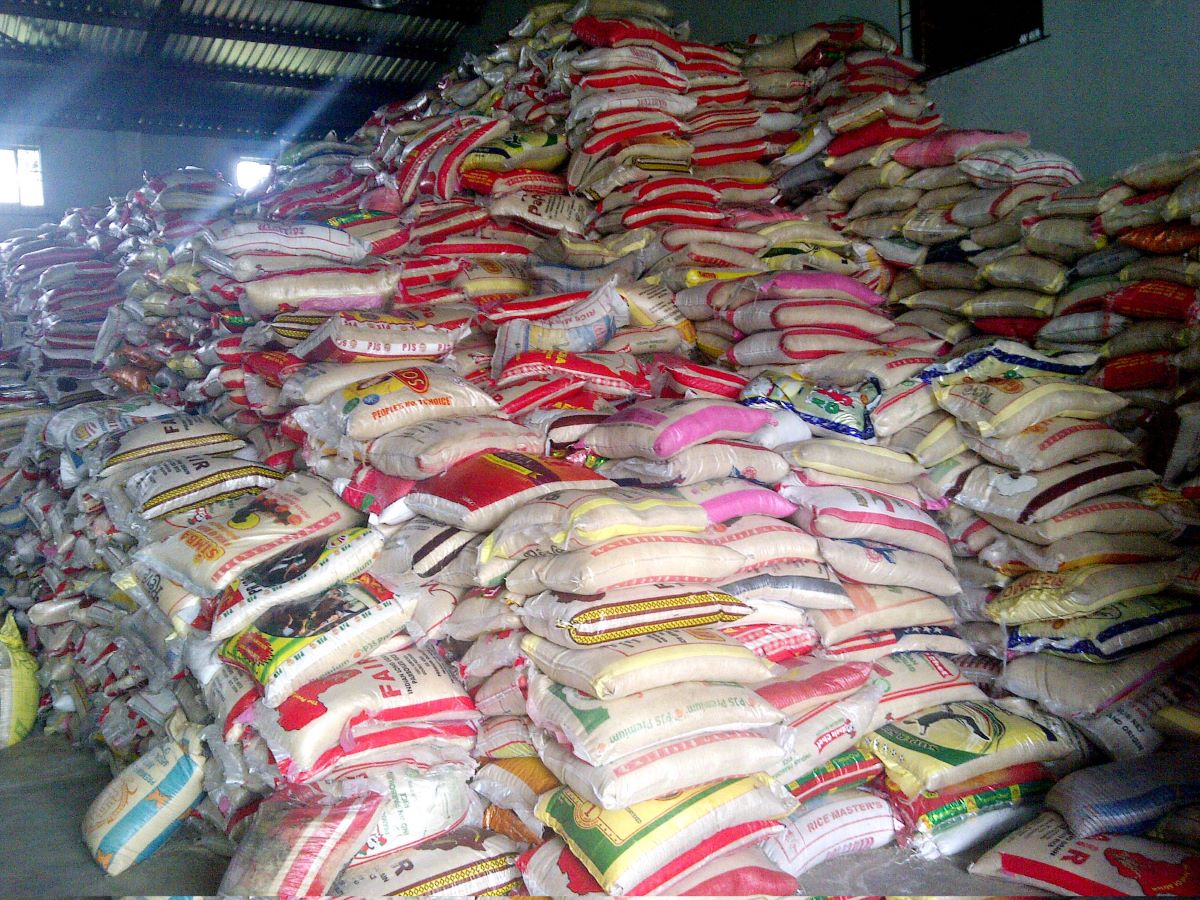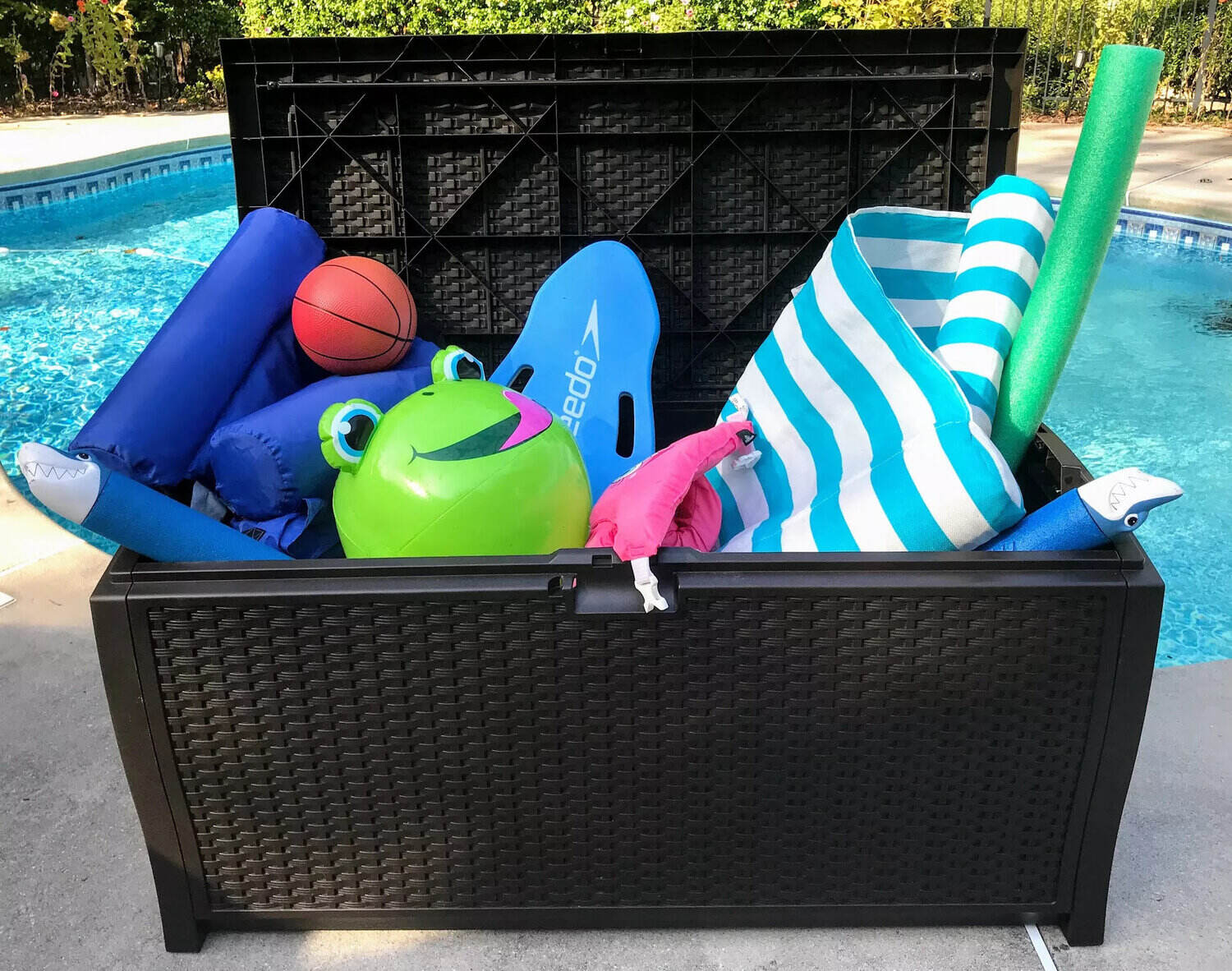

Articles
How To Store Large Amounts Of Water
Modified: January 19, 2024
Learn effective strategies and tips for storing large amounts of water with our comprehensive articles. Stay prepared and ensure your water supply is always secure.
(Many of the links in this article redirect to a specific reviewed product. Your purchase of these products through affiliate links helps to generate commission for Storables.com, at no extra cost. Learn more)
Introduction
Water is an essential resource for survival, and having access to a clean and reliable water supply is crucial, especially in times of emergencies or natural disasters. Storing large amounts of water is a smart and proactive way to ensure that you and your family have an adequate supply of water when needed. Whether you live in an area prone to droughts, face the risk of water contamination, or simply want to be prepared for any unexpected events, storing water can provide you with peace of mind and security.
Storing water in large quantities allows you to have a reserve supply for drinking, cooking, and sanitation needs, even when your regular water supply is compromised. It also enables you to support other essential activities such as gardening, livestock care, and emergency firefighting. By taking the necessary steps to store water, you can become more self-sufficient and less reliant on external sources, which may not always be readily available.
The process of storing large amounts of water involves selecting appropriate containers, choosing the right storage location, implementing regular maintenance, and ensuring water quality through proper treatment and purification methods. In this article, we will explore various options for water storage containers, including underground and aboveground tanks, cisterns, rainwater harvesting systems, water bladders, and inflatable storage tanks. We will also discuss important considerations and best practices for water storage to help you make informed decisions.
Remember, storing water not only benefits you and your family but also allows you to provide assistance to others in your community during times of need. So, let’s dive into the details of storing large amounts of water and gain valuable insights into this vital aspect of emergency preparedness.
Key Takeaways:
- Proper water storage is crucial for emergencies, sustainability, and self-sufficiency. Selecting the right containers, implementing maintenance, and treatment practices ensure a reliable and safe water supply.
- Location, maintenance, and treatment are key to effective water storage. Proper placement, regular inspections, and purification methods maintain water quality and support sustainability and preparedness.
Read more: How To Store Large Amounts Of Soil
Importance of Storing Large Amounts of Water
Storing large amounts of water is essential for several reasons, ranging from emergency preparedness to everyday convenience. Let’s delve into the importance of having an ample water supply readily available:
1. Emergency Preparedness: Natural disasters such as hurricanes, earthquakes, and floods can disrupt water infrastructure, leaving households without access to clean water for an extended period. By storing a large amount of water in advance, you can ensure hydration, sanitation, and cooking needs are met during emergencies when traditional water sources may be compromised.
2. Water Shortages or Droughts: Some regions experience water shortages or prolonged droughts, making it challenging to secure an adequate water supply. By storing a substantial amount of water, you can mitigate the impact of water scarcity and ensure a reliable source for essential daily activities.
3. Contamination Risks: Water sources can become contaminated due to various factors, including industrial leaks, chemical spills, or bacterial outbreaks. Having stored water ensures you have access to a safe and clean supply during times when tap water may not be potable.
4. Remote Locations or Off-Grid Living: If you live in a remote area or off-grid where access to municipal water supplies is limited or non-existent, storing large amounts of water becomes crucial. It allows you to maintain your self-sufficiency and independence without relying solely on external sources.
5. Humanitarian Aid: In times of crises, such as natural disasters or refugee situations, having a reserve of stored water enables you to provide much-needed assistance to those in need. By donating or distributing water supplies, you can help alleviate the suffering of others and contribute to rebuilding efforts.
6. Everyday Convenience: Storing water in large quantities also offers everyday convenience. It reduces the reliance on fetching water from external sources, saving time and effort. It ensures a steady water supply for tasks like gardening, livestock care, and other non-potable needs.
Considering these reasons, it becomes evident that storing large amounts of water is not just a luxury but a necessity, especially when unpredictable events or circumstances arise. Next, we will explore different containers suitable for storing water, ranging from underground tanks to rainwater harvesting systems.
Containers for Storing Water
When it comes to storing large amounts of water, choosing the right container is of utmost importance. The container should be durable, safe for storing potable water, and capable of withstanding the elements. Here are some common types of containers used for water storage:
1. Underground Water Storage Tanks: Underground tanks are an excellent option for long-term water storage. These tanks are typically made of robust materials such as polyethylene or fiberglass, which are resistant to corrosion and UV rays. They can be buried underground, saving valuable space and minimizing the impact on the surrounding landscape. Additionally, underground tanks provide insulation, helping to maintain the temperature of the stored water.
2. Aboveground Water Storage Tanks: Aboveground tanks come in various shapes and sizes, including cylindrical, rectangular, and modular designs. They are usually made of polyethylene, steel, or concrete. These tanks are easy to install and can be placed in a designated area in your property or on a platform for elevated storage. They offer flexibility in terms of capacity and can be customized to meet specific storage needs.
3. Cisterns: Cisterns are large, underground storage structures that collect and store rainwater for later use. They can be made of concrete, fiberglass, or polyethylene. Cisterns are ideal for harvesting rainwater and can hold a significant amount of water depending on their size. They often feature filters and screens to prevent debris and contaminants from entering the storage system.
4. Rainwater Harvesting Systems: Rainwater harvesting systems are an eco-friendly and sustainable method of collecting and storing rainfall. They typically consist of a collection mechanism such as gutters or downspouts, a filtration system, and a storage tank. The collected rainwater is treated and stored for various non-potable uses, such as irrigation, washing vehicles, and flushing toilets.
5. Water Bladders and Inflatable Storage Tanks: Water bladders and inflatable storage tanks are portable and flexible options for temporary water storage. These containers are made of durable materials like PVC or polyurethane and can be easily transported and set up in different locations. They are commonly used in emergency situations, camping trips, or in areas where permanent storage solutions are not feasible.
When selecting a container, it’s important to consider factors such as the desired capacity, available space, durability, and the specific purpose of use. Furthermore, always ensure that the chosen container is designed for storing potable water and meets the required safety standards. In the next section, we will discuss considerations for the location and placement of water storage tanks.
Underground Water Storage Tanks
Underground water storage tanks are an efficient and practical solution for storing large amounts of water. These tanks offer several advantages, making them a popular choice for long-term water storage. Let’s explore the benefits and considerations associated with underground water storage tanks:
1. Space Saving: One of the primary advantages of underground water storage tanks is that they are buried beneath the ground, maximizing land use efficiency. This allows you to free up valuable space on your property for other purposes while still maintaining a significant water supply.
2. Protection from Environmental Factors: Being underground, these tanks are shielded from environmental factors such as sunlight, temperature fluctuations, and extreme weather conditions. This helps to maintain the water’s quality by preventing the growth of algae, bacteria, and other contaminants that may thrive in exposed aboveground tanks.
3. Durability: Underground water storage tanks are built to withstand external pressures, ensuring their longevity and structural integrity over time. They are typically made from sturdy materials like polyethylene or fiberglass, which are resistant to corrosion, rust, and degradation caused by sunlight exposure.
4. Insulation: The surrounding earth acts as a natural insulator for underground water storage tanks, helping to regulate the temperature of the stored water. This can be particularly beneficial in climates with extreme temperature variations, as it reduces the risk of freezing during cold weather or excessive heating during hot weather.
5. Security and Aesthetics: Underground tanks are hidden from view, providing enhanced security by minimizing the risk of vandalism, theft, or accidental damage. The aesthetics of your property are also preserved, as the tank remains out of sight and does not disrupt the visual appeal of your landscape.
While underground water storage tanks offer numerous advantages, there are a few important considerations to keep in mind:
1. Installation: Installing an underground water storage tank requires professional expertise and proper planning. The tank needs to be properly excavated, secured, and connected to the existing water supply system. It is essential to comply with local building codes and obtain any necessary permits before installation.
2. Maintenance and Accessibility: Regular maintenance is crucial to ensure the longevity and performance of underground tanks. This includes periodic inspections, cleaning, and checking for any signs of damage or leaks. Adequate access points, such as manholes or inspection ports, should be installed to facilitate routine maintenance and emergency repairs.
3. Water Quality: Despite the protective nature of underground tanks, water quality can still be impacted by factors such as groundwater contamination or infiltration of pollutants. It is essential to regularly test the stored water and implement appropriate water treatment and purification methods to maintain its potability.
4. Cost Considerations: Underground water storage tanks generally require higher initial investment compared to aboveground options due to the excavation and installation process. However, the long-term benefits, including space savings and durability, offset the initial costs, making them a cost-effective solution over time.
Underground water storage tanks provide a reliable and space-saving solution for storing large amounts of water. Their durability, protection from environmental factors, and enhanced security make them an ideal choice for both residential and commercial applications. In the following section, we will explore aboveground water storage tanks as an alternative option for water storage.
Aboveground Water Storage Tanks
Aboveground water storage tanks are a versatile and accessible option for storing large amounts of water. These tanks offer several advantages and are suitable for various applications. Let’s explore the benefits and considerations associated with aboveground water storage tanks:
1. Ease of Installation: Aboveground water storage tanks are relatively easy to install compared to underground tanks. They can be placed on a level and stable surface, eliminating the need for excavation and specialized equipment. This makes them a convenient option for both residential and commercial use.
2. Customizable Size and Capacity: Aboveground tanks come in a wide range of sizes and capacities, allowing you to choose the right tank based on your specific water storage needs. Whether you require a small tank for household use or a larger tank for agricultural or industrial purposes, there is a size available to accommodate your requirements.
3. Accessibility and Visibility: Aboveground tanks are easily accessible for routine maintenance, inspections, and repairs. They can be equipped with various fittings, valves, and pumps for ease of use and connectivity to the water supply system. Additionally, the visible nature of these tanks allows for easy monitoring of water levels and quality.
4. Cost-Effective Solution: Aboveground water storage tanks generally have a lower initial cost compared to underground tanks. The absence of excavation and lower installation requirements contribute to the affordability of aboveground options. Additionally, these tanks can often be transported and reused if the need arises.
5. Flexibility and Portability: Aboveground tanks offer flexibility in terms of placement and relocation. They can be positioned based on your specific requirements, whether it’s adjacent to a building, at a specific height for gravity flow, or in a designated area of your property. If needed, aboveground tanks can also be easily moved to a different location.
While aboveground water storage tanks offer numerous advantages, there are a few important considerations to keep in mind:
1. Space Requirements: Aboveground tanks occupy space on your property and may require a dedicated area for installation. It’s important to consider the available space and ensure the tank’s size and height are compatible with your property’s layout and any relevant regulations.
2. Visual Impact: Aboveground tanks are visible structures and may have an impact on the visual aesthetics of your property. Depending on your preference, you may choose tanks with more appealing designs or explore options to camouflage or integrate the tanks into the surrounding environment.
3. Exposure to Elements: Unlike underground tanks, aboveground tanks are exposed to environmental factors such as sunlight, temperature variations, and inclement weather. This may require additional measures to protect the tank’s integrity and the quality of the stored water, such as UV-resistant coatings or insulation.
4. Maintenance and Inspections: Regular maintenance, including cleaning, inspections, and repairs, is essential to ensure the optimal performance and longevity of aboveground water storage tanks. It’s important to regularly check for any signs of leaks, corrosion, or damage and address them promptly to prevent further issues.
Aboveground water storage tanks provide a practical and customizable solution for storing large amounts of water. Their ease of installation, accessibility, and cost-effectiveness make them a popular choice for residential, commercial, and agricultural applications. In the next section, we will explore another method of water storage – cisterns.
Read more: How To Store Large Amounts Of Rice
Cisterns
Cisterns are underground storage structures specifically designed for collecting and storing rainwater. They have been used for centuries as a reliable method of water storage. Cisterns offer several benefits and are particularly useful for areas where access to clean water may be limited. Let’s explore the advantages and considerations associated with cisterns:
1. Rainwater Collection: Cisterns function by collecting rainwater that falls on rooftops or other collection surfaces. The water is directed into the cistern through gutters or downspouts, ensuring maximum utilization of rainfall. This method of water collection is eco-friendly, sustainable, and reduces dependency on external water sources.
2. High Storage Capacity: Cisterns have the potential to store large amounts of rainwater, depending on their size and design. They can accommodate significant volumes, making them suitable for residential, commercial, and agricultural applications. The capacity can be customized to meet specific water storage needs.
3. Cost Savings: By collecting and storing rainwater in cisterns, you can save on utility bills associated with traditional water sources. Rainwater is naturally free and abundant, making it a cost-effective alternative for tasks that do not require treated, potable water, such as gardening, irrigation, and non-potable household uses.
4. Sustainable Water Supply: Cisterns support sustainable water usage by maximizing the capture and storage of rainwater. By utilizing rainwater for non-potable applications, you conserve precious drinking water resources and reduce your ecological footprint.
5. Water Quality: Properly designed and maintained cisterns offer excellent water quality. Rainwater is typically soft and free from the chemicals commonly found in treated water sources. However, it is crucial to implement screening and filtration systems to remove debris and contaminants, ensuring the stored water is suitable for its intended uses.
Considerations for cisterns include:
1. Size and Design: The size of the cistern depends on your water storage needs and the amount of rainwater you expect to collect. It’s important to analyze rainfall patterns and estimate water requirements to determine the appropriate cistern size. Additionally, consider the design of the cistern, ensuring it can accommodate proper inlet and outlet connections.
2. Filtration and Treatment: Rainwater collected in cisterns should undergo filtration and treatment processes to ensure its safety for use. This may include the use of mesh screens, sediment filters, and disinfection methods such as UV light or chlorine treatment. Regular maintenance and cleaning are crucial to uphold water quality standards.
3. Site Preparation and Installation: Proper site preparation is essential before installing a cistern. Ensure the area is level, stable, and free from obstructions. The cistern should be positioned in a location where it can efficiently capture rainwater and where access for maintenance and inspections is convenient.
4. Local Regulations and Guidelines: Check local regulations and guidelines regarding the installation and use of cisterns. Some regions may have specific requirements or restrictions related to water collection and storage practices. Complying with these regulations ensures the legality and safety of your cistern installation.
Cisterns offer a sustainable and efficient method of water storage by harnessing the power of rainwater. They provide a reliable water supply, reduce reliance on traditional water sources, and support eco-conscious practices. In the next section, we will explore another method of water storage – rainwater harvesting systems.
Rainwater Harvesting Systems
Rainwater harvesting systems are an innovative and sustainable method of collecting and storing rainwater for later use. These systems offer numerous benefits, ranging from reducing reliance on traditional water sources to promoting eco-friendly practices. Let’s explore the advantages and considerations associated with rainwater harvesting systems:
1. Sustainable Water Source: Rainwater harvesting systems allow you to make the most of a natural and renewable water source. By collecting rainwater, you can reduce the demand for treated water and preserve precious freshwater resources for more essential uses.
2. Cost Savings: Utilizing rainwater for various non-potable applications can lead to significant cost savings. Rainwater is naturally free, meaning you can reduce your water bills associated with tasks such as garden irrigation, toilet flushing, and washing vehicles.
3. Environmental Benefits: Rainwater harvesting systems help mitigate the impact of stormwater runoff. By capturing rainwater, you prevent excess water from entering storm drains and potentially contributing to flooding or pollution of natural water bodies.
4. Customizable Designs: Rainwater harvesting systems can be tailored to suit different needs and preferences. They range from simple setups, like rain barrels, to more complex systems with multiple collection points, filtration mechanisms, and storage tanks. The design can be scaled according to your water requirements and available space.
5. Water Conservation and Drought Management: Rainwater harvesting is particularly valuable in regions prone to droughts or facing water shortage challenges. By capturing rainwater during wet seasons, you can build a reserve supply for dry periods and help manage water scarcity issues.
Considerations for rainwater harvesting systems include:
1. Collection Mechanism: The collection mechanism is a vital component of a rainwater harvesting system. It typically involves the use of gutters, downspouts, and filters to direct rainwater into storage tanks or cisterns. Proper installation and regular maintenance of the collection mechanism are essential to ensure optimal water capture and prevent debris buildup.
2. Filtration and Treatment: Rainwater collected in rainwater harvesting systems should undergo filtration and treatment processes to ensure its safety for use. This may involve the use of mesh screens, sediment filters, and disinfection methods such as UV light or chlorination. Regular maintenance and cleaning of the filtration system are important to uphold water quality standards.
3. Storage Capacity: Determining the appropriate storage capacity depends on factors such as rainfall patterns, water requirements, and available space. It’s essential to assess these factors to ensure sufficient storage capacity to meet your needs during periods of low rainfall.
4. Maintenance and Inspection: Regular maintenance and inspection of the rainwater harvesting system are crucial to ensure its optimal functionality. This includes monitoring the condition of storage tanks, checking for leaks or damage, cleaning filters, and conducting routine maintenance tasks as recommended by the system manufacturer.
Rainwater harvesting systems offer a sustainable and efficient way to utilize rainwater for various non-potable needs. They promote water conservation, reduce reliance on traditional water sources, and contribute to a more environmentally friendly lifestyle. In the next section, we will explore another option for water storage – water bladders and inflatable storage tanks.
Store large amounts of water in clean, food-grade containers such as barrels or tanks. Make sure to keep the containers in a cool, dark place to prevent bacterial growth and use a water treatment solution to keep the water safe for drinking.
Water Bladders and Inflatable Storage Tanks
Water bladders and inflatable storage tanks are portable and flexible solutions for temporary water storage. These containers offer convenience and versatility in storing large amounts of water in a wide range of settings. Let’s explore the benefits and considerations associated with water bladders and inflatable storage tanks:
1. Portability: One of the key advantages of water bladders and inflatable storage tanks is their portability. These containers are lightweight and can be easily transported to different locations as needed. They are ideal for camping trips, emergency situations, or areas where permanent storage solutions are not feasible.
2. Space Efficiency: Water bladders and inflatable storage tanks can be easily folded or deflated when not in use, saving space during storage or transportation. This makes them a practical choice for those who have limited space or need a flexible water storage solution that can be set up and taken down as required.
3. Quick Setup: These containers are designed for easy and quick setup. They typically come with rapid-fill valves or pumps for efficient water filling. With their straightforward setup process, water bladders and inflatable storage tanks provide a convenient option for rapidly establishing a temporary water storage system.
4. Versatility: Water bladders and inflatable storage tanks are versatile and can be used for various applications. They can be utilized for emergency water supply, temporary construction projects, agricultural needs, or any situation where a portable water storage solution is necessary.
5. Durability: High-quality water bladders and inflatable storage tanks are made from durable materials such as PVC or polyurethane. These materials are resistant to punctures and tears, ensuring the containers can withstand challenging environmental conditions and regular use. However, it is important to handle them with care to avoid any damage during setup or transportation.
Considerations for water bladders and inflatable storage tanks include:
1. Capacity: The capacity of these containers varies, ranging from smaller sizes suitable for personal use to larger tanks that can store thousands of gallons of water. Determine your water storage needs and choose a bladder or tank size that aligns with those requirements.
2. Maintenance and Inspection: Regular maintenance and inspection are crucial to ensure the integrity and cleanliness of water bladders and inflatable storage tanks. Check for any leaks, tears, or signs of damage regularly. Clean and sanitize the tanks according to manufacturer guidelines to maintain water quality.
3. Compatibility with Water Treatment: Depending on the intended use of the stored water, consider the compatibility of the water bladder or inflatable tank with water treatment methods. Some storage tanks may not be suitable for certain water treatment chemicals or filtration systems, so it’s important to verify compatibility before implementing water treatment.
4. Longevity: Water bladders and inflatable storage tanks have a finite lifespan. While they can withstand regular use and environmental conditions, it’s important to monitor and assess their condition over time. Replace or repair any damaged or worn-out components to maintain the functionality and safety of the containers.
Overall, water bladders and inflatable storage tanks provide a convenient and flexible solution for temporary water storage needs. Their portability, space efficiency, and versatility make them a valuable option for situations where mobility and quick setup are essential. In the concluding section, we will discuss important considerations for storing water, regardless of the type of container used.
Considerations for Storing Water
When it comes to storing large amounts of water, there are several important considerations to ensure the quality, safety, and efficiency of your water storage system. Regardless of the type of container you choose, here are some key factors to keep in mind:
1. Location and Placement: Selecting the right location and proper placement for your water storage containers is crucial. Ensure that the area is stable, level, and free from potential hazards. Consider factors such as accessibility for maintenance, protection from extreme weather conditions, and compliance with any local regulations or guidelines.
2. Water Source and Quality: The quality of the water you store is of utmost importance. If you are using tap water, ensure it is treated and free from contaminants before storing. If you are collecting rainwater, implement appropriate filtration and treatment methods to remove debris, bacteria, and other impurities. Regularly test the water quality to ensure its potability and make any necessary adjustments to maintain its quality over time.
3. Maintenance and Inspections: Regular maintenance and inspections are vital for the longevity and functionality of your water storage system. Clean the containers periodically to remove sediment or buildup that may affect water quality and integrity. Check for any signs of leaks, damage, or wear and repair or replace components as needed. Regularly inspect and clean filtration systems, valves, and fittings.
4. Water Usage Rotation: Implementing a rotation system for the water stored is important to ensure freshness and prevent stagnation. Use and replace stored water at regular intervals, especially in long-term storage situations. By rotating the water, you maintain its quality and minimize the risk of bacterial growth or contamination.
5. Water Treatment and Purification: Consider implementing appropriate water treatment and purification methods based on the intended use of the stored water. This may include disinfection with chlorine or other approved chemicals, filtration through activated carbon or sediment filters, or UV light treatment. Ensure that the chosen treatment methods are suitable for the specific type of container and stored water.
6. Security and Safety: Adequate security measures should be in place to protect your water storage system from tampering or unauthorized access. If needed, consider installing locking mechanisms or fencing around the containers to prevent theft or vandalism. Additionally, ensure that the containers are positioned in a safe manner that minimizes the risk of accidents or damage.
7. Disaster Preparedness: Storing water is an essential part of disaster preparedness. It’s important to have a sufficient supply of water in the event of emergencies or natural disasters. Evaluate your water needs based on emergency guidelines or recommendations and ensure you have a reserve supply to meet those requirements.
By considering these factors and implementing appropriate measures, you can effectively store large amounts of water and ensure the readiness and reliability of your water supply. Whether it’s for emergency preparedness or everyday use, proper water storage practices contribute to a safer, more self-sufficient lifestyle.
As you embark on your water storage journey, remember to stay informed about local regulations, consult professionals for guidance if needed, and regularly educate yourself on best practices for water storage and maintenance. With careful planning and attention to detail, you can have peace of mind knowing that you have a readily available supply of water when you need it most.
Remember, water is life, and proper water storage is key to ensuring our well-being and survival.
Read more: How To Store Large Amounts Of Flour
Location and Placement of Water Storage Tanks
The location and placement of water storage tanks play a vital role in ensuring the functionality, longevity, and convenience of your water storage system. Choosing the right location and properly positioning the tanks are important considerations that can impact the accessibility, safety, and performance of your water storage setup. Here are some key factors to keep in mind:
1. Stability and Level Surface: Select a location that offers a stable and level surface for the placement of your water storage tanks. Uneven or unstable ground can lead to issues such as tilting or potential damage to the tanks. Ensuring a solid and flat surface is essential to maintain the structural integrity of the tanks and prevent any accidents or spills.
2. Adequate Space: Consider the space requirements for your water storage tanks. Ensure that there is enough room to accommodate the tanks and any necessary equipment, such as pumps or filtration systems. Additionally, allow sufficient space around the tanks for maintenance, inspections, and easy access to valves and fittings.
3. Accessibility: Position the water storage tanks in an area that offers easy accessibility for maintenance and monitoring. This includes having sufficient space to reach all sides of the tank and ensuring that there is enough clearance to open and close valves, perform inspections, and clean the tanks. Inadequate accessibility can make these tasks challenging and may lead to neglect or inadequate maintenance.
4. Protection from the Elements: Consider the impact of environmental factors such as direct sunlight, extreme temperatures, and inclement weather conditions on your water storage tanks. Exposure to sunlight can promote algae growth or deterioration of certain tank materials. Extreme temperatures can affect the quality and longevity of the stored water. Where possible, position the tanks in a shaded area or use covers and insulation to protect them from these elements.
5. Proximity to Water Sources: If your water storage tanks are intended to collect water from a specific source such as rainwater or a well, place the tanks in close proximity to that water source. This will minimize the length and complexity of the plumbing connections, reducing potential issues such as pressure loss or contamination risks. Consider the logistics of directing water from the source to the tanks efficiently.
6. Compliance with Regulations: Ensure that the location and placement of your water storage tanks comply with any local regulations, zoning requirements, or building codes. These regulations may dictate setbacks from property lines or the need for permits for certain tank sizes or configurations. Familiarize yourself with the applicable rules to avoid potential legal issues.
7. Aesthetic Considerations: Depending on your preferences and the visibility of the water storage tanks, you may want to consider how their placement impacts the overall aesthetics of your property. Explore options to camouflage or integrate the tanks into the surrounding environment. This can be done through landscaping, planting foliage, or using screens or decorative enclosures to minimize their visual impact.
Remember, proper location and placement of water storage tanks contribute to their functionality, ease of maintenance, and overall effectiveness. Take the time to assess your property, consider the logistical requirements, and consult professionals if needed to ensure optimal placement. With careful planning and attention to detail, you can create a water storage system that meets your needs while seamlessly integrating into your environment.
Maintenance and Inspection of Water Storage Containers
Maintenance and regular inspections are crucial for ensuring the optimal performance, longevity, and safety of your water storage containers. By implementing a proactive maintenance routine and conducting thorough inspections, you can identify and address any issues promptly, maintain water quality, and extend the lifespan of your containers. Here are some key considerations for maintenance and inspection:
1. Cleaning and Sanitizing: Regular cleaning is essential to prevent the buildup of sediment, debris, or contaminants in your water storage containers. The frequency of cleaning depends on factors such as water quality, usage patterns, and environmental conditions. Thoroughly clean the containers using mild detergent or a vinegar-water solution, and rinse them well before refilling. For additional safety, consider sanitizing the containers periodically using approved methods such as chlorine or hydrogen peroxide treatment.
2. Check for Leaks and Damage: Routinely inspect your water storage containers for any signs of leaks, cracks, or damage. Pay particular attention to seals, fittings, and connections. Run your hands along the exterior of the containers to detect any moisture or dripping water. If you notice any leaks or damage, promptly repair or replace the affected components to prevent further deterioration and potential water loss.
3. Monitor Water Quality: Water quality is crucial for the usability of stored water. Conduct regular water quality tests to ensure that the stored water remains clean and safe for its intended use. Monitor parameters such as pH level, turbidity, and presence of bacteria or contaminants. Adjust your water treatment methods as necessary to maintain desired water quality standards and consult professionals if needed.
4. Inspect Filtration Systems: If your water storage system includes filtration systems, regularly inspect and clean them to maintain their effectiveness. Sediment filters, activated carbon filters, and other types of filtration media can become clogged over time, reducing their filtration capacity. Follow manufacturer guidelines for routine maintenance, such as backwashing or replacing filter cartridges, to ensure proper filtration and prevent potential issues.
5. Check Valves, Fittings, and Seals: Valves, fittings, and seals play a crucial role in the functionality of your water storage containers. Regularly inspect and test them to ensure they are working properly and are not worn or damaged. Check for any signs of leaks, corrosion, or loose connections. Tighten or replace any faulty components to maintain water integrity and prevent water loss.
6. Access Points and Ventilation: Ensure that access points, such as manholes or inspection ports, are easily accessible and in good working condition. These access points allow for routine inspections, cleaning, and maintenance tasks. Additionally, ensure proper ventilation to prevent the buildup of moisture or condensation inside the containers, as this can contribute to the growth of bacteria or mold.
7. Follow Manufacturer Guidelines: Refer to the manufacturer’s guidelines and recommendations for maintenance and inspections specific to your water storage containers. Manufacturers often provide instructions on cleaning procedures, recommended maintenance schedules, and the lifespan of the containers. Adhering to these guidelines can help ensure the longevity and performance of your containers.
Maintaining and regularly inspecting your water storage containers is crucial for their optimal functionality and the quality of the stored water. By implementing a proactive approach to maintenance and conducting thorough inspections, you can identify and address any issues before they escalate, ensuring the efficient and safe use of your water storage system. Regularly educate yourself on best practices and consult professionals if needed to maintain your water storage containers effectively.
Water Treatment and Purification for Stored Water
Water treatment and purification are essential steps to ensure the safety and potability of stored water. Even if water is initially clean, it can become contaminated over time due to various factors. Implementing proper treatment and purification methods can help maintain the quality of the stored water and ensure its suitability for consumption and other uses. Here are some key considerations for water treatment and purification:
1. Filtration: Filtration is a crucial step in removing sediment, suspended particles, and larger impurities from the stored water. Filtration can be done through various methods, including sediment filters, activated carbon filters, or multimedia filters. The specific filtration system you choose depends on the quality of the water, desired level of purification, and the type of contaminants you need to remove.
2. Disinfection: Disinfecting the stored water is necessary to eliminate or reduce the presence of bacteria, viruses, and other microorganisms. The most common method of disinfection is by using chlorine or chlorine-based compounds. Chlorine effectively kills or neutralizes harmful organisms, making the water safe for consumption. Follow recommended chlorination dosages and contact times to achieve adequate disinfection. Alternatively, non-chemical methods such as ultraviolet (UV) light or ozone treatment can also be used for disinfection.
3. Chemical Treatment: Depending on the quality of the stored water and specific requirements, you may need to incorporate chemical treatments to address specific contaminants. Water conditioners or clarifiers can help remove unwanted substances such as iron, manganese, or hardness-causing minerals. Follow the manufacturer’s instructions and recommended dosages when using chemical treatments to avoid over-treatment or potential adverse effects on water quality.
4. pH Adjustment: Monitoring and adjusting the pH level of the stored water is essential for proper water treatment and preservation. The optimal pH range for drinking water typically falls between 6.5 and 8.5. If the pH is outside this range, adjust it accordingly using appropriate pH correction methods such as the addition of food-grade acids or bases. Proper pH levels contribute to the overall taste, clarity, and effectiveness of disinfection methods.
5. Regular Testing: Regularly testing the quality of stored water is imperative to ensure ongoing safety. Perform routine tests for parameters such as pH, total dissolved solids (TDS), chlorine residual, and bacterial presence. Test kits are readily available and can provide you with important information about the quality of the stored water. Consider conducting regular comprehensive water analysis to assess mineral content, heavy metal levels, and other potential contaminants if necessary.
6. Storage Container Maintenance: Water treatment and purification efforts can be undermined if the storage containers are not properly cleaned and maintained. Clean the containers regularly to remove sediment, debris, and any potential sources of contamination. Inspect and disinfect any access points, such as manholes or inspection ports. Ensure that seals and fittings are intact and in good condition to prevent any potential external contamination.
7. Regular System Flushing and Use Rotation: Regularly flush the water storage system to remove stagnant water and promote fresh water circulation. If the water is being stored for long periods, consider implementing a rotation system to ensure that the stored water is used and replaced periodically. This not only helps maintain water freshness but also prevents potential water quality deterioration due to prolonged storage.
Proper water treatment and purification for stored water are vital to ensure its safety and potability. By applying appropriate filtration methods, disinfection techniques, and regular testing, you can maintain the quality of the stored water and support its safe use for drinking, cooking, and other purposes. Stay informed about best practices, follow manufacturer guidelines, and consult professionals or local health authorities if needed to ensure the effective treatment and purification of your stored water.
Conclusion
Storing large amounts of water is a wise and proactive step towards ensuring a reliable and accessible water supply for various needs. Whether you are preparing for emergencies or aiming for self-sufficiency, proper water storage can provide peace of mind and help you navigate periods of water scarcity or contamination. By carefully selecting the right water storage containers and implementing effective maintenance and treatment practices, you can ensure the safety, quality, and longevity of your stored water.
From underground and aboveground water storage tanks to cisterns, rainwater harvesting systems, and portable options like water bladders and inflatable storage tanks, there is a wide range of containers available to meet your specific requirements. Each container type has unique benefits and considerations, allowing you to tailor your water storage system to suit your needs and available space.
However, the journey doesn’t end with selecting the appropriate containers. Regular maintenance and inspection are crucial to keep your water storage system in optimal condition. Cleaning and sanitizing the containers, checking for leaks or damage, and monitoring water quality are essential tasks that should be incorporated into your routine. Proper treatment and purification methods, such as filtration, disinfection, and pH adjustment, contribute to the safety and potability of stored water.
By considering factors like location and placement, complying with regulations, and ensuring accessibility and security, you can further enhance the functionality and convenience of your water storage system. Regular testing, system flushing, and water rotation help maintain water freshness and prevent stagnation or degradation of water quality.
Ultimately, proper water storage is not just about being prepared for emergencies; it is a commitment to sustainability, self-sufficiency, and responsible water management. It allows us to reduce our reliance on traditional water sources, conserve water resources, and contribute to a greener future. By storing water efficiently and effectively, we ensure that this essential resource remains accessible when we most need it.
So, whether you choose to store water for emergency preparedness, to mitigate water scarcity, or to support sustainable practices, remember the significance of proper water storage. Continuously educate yourself on best practices, stay informed about local regulations, consult professionals when needed, and review your setup periodically to adapt to changing circumstances. With careful planning and diligent maintenance, you can confidently rely on your stored water supply and enjoy the peace of mind that comes with being prepared.
Frequently Asked Questions about How To Store Large Amounts Of Water
Was this page helpful?
At Storables.com, we guarantee accurate and reliable information. Our content, validated by Expert Board Contributors, is crafted following stringent Editorial Policies. We're committed to providing you with well-researched, expert-backed insights for all your informational needs.














0 thoughts on “How To Store Large Amounts Of Water”